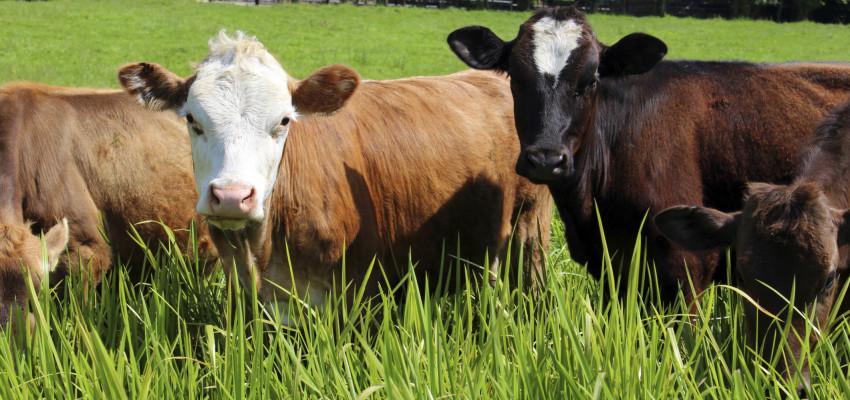By Hannah Becker on June 1, 2016
Organic Meat: How is it different?

We’ve all seen the “organic” labels sprinkled along the meat aisle.
Depending on your carnivorous palate, you can now find organic almost everything – from breakfast bacon to pot roast.
Many consumers feel organic labeled meat products are “more natural” than non-organic products, but do they really understand what they are buying when purchasing an organic-labeled meat product? Who decides when organic labels are used? How do farmers raise livestock organically? What are the differences between organic and non-organic meat?
Let’s find out…
Who gets to use organic labels?
Recall from last month’s post, Organic Foods or Non-organic, “organic” labels aren’t just given out to anybody – the United States Department of Agriculture (USDA) requires a stringent certification process for all farmers and food companies wanting to market their products as organic.
In regards to organic meat production, it’s a little more involved than simply not administering antibiotics and withholding synthetic preservatives in meat product packaging – certified organic production practices involve everything from the type of pasture livestock graze on to the processing plant’s sanitation methods.
How is organic meat raised?
USDA regulations require that animals intended for organic processing are raised in natural environments (grazed outside on pasture vs. commercial systems, fed 100 percent organic feed and forage and not administered antibiotics or hormones. Organic producers’ husbandry practices are structured to provide animals the most natural environment and life cycle – practices that start even before the animal is born (organic regulations require implementation no later than third trimester for non-poultry animals).
Here’s a quick rundown on organic livestock production:
- Environment: Organic livestock are raised in environments most similar to habitats found in nature. This means access to outdoor areas, shade, shelter, space for exercise, fresh air, clean drinking water and direct sunlight.
- Grazing: Ruminant animals, such as cattle, sheep and goats, must be allowed to graze pastures during grazing seasons. This means no concrete floors or dirt-based feedlots – organically produced livestock cannot be continually confined.
- Animal Health: Just as conventional ranchers, the key to good animal health is prevention – meaning good genetics, nutrition and low-stress environments are necessary. Vaccinations are permitted under organic regulation, but antibiotics and growth hormones are not.
- Organic Feed: Everything the animal eats – from feed to pasture grass – must be certified as organically grown and processed. Commercially produced grains, GMO products, non-organic feed additives and growth hormones are not allowed.
Organic vs. non-organic meat
To use the organic label, organic meat products must not only come from organically raised livestock, they must also be processed in accordance with special USDA regulations.
Organic meat products are processed differently than non-organic meat products – so much so, that any contact with non-organic products during the production process is considered “contamination” (if it meets standards, they enter non-organic production). This means organic products must be processed in a plant that practices strict sanitation practices necessary to prevent mixing of organic and non-organic material.
Additionally, USDA regulations prohibit the use of artificial preservatives, colors or flavors, with very few exceptions; hence the sometimes shortened shelf-life of organic vs. non-organic products. For multi-ingredient organic meat products, processors must use certified organic ingredients for a minimum of 95 percent of the product.
Conclusion
Organic livestock production is a little more complicated than simply raising livestock on a green, grassy field – it’s a tightly regulated aspect of agriculture production.
With regulatory standards starting before the animal is even born and extending through end-product packaging, organic meat production is quite the intricate process. By becoming familiar with the production differences between organic and non-organic food products, today’s consumer can make informed food purchases.


